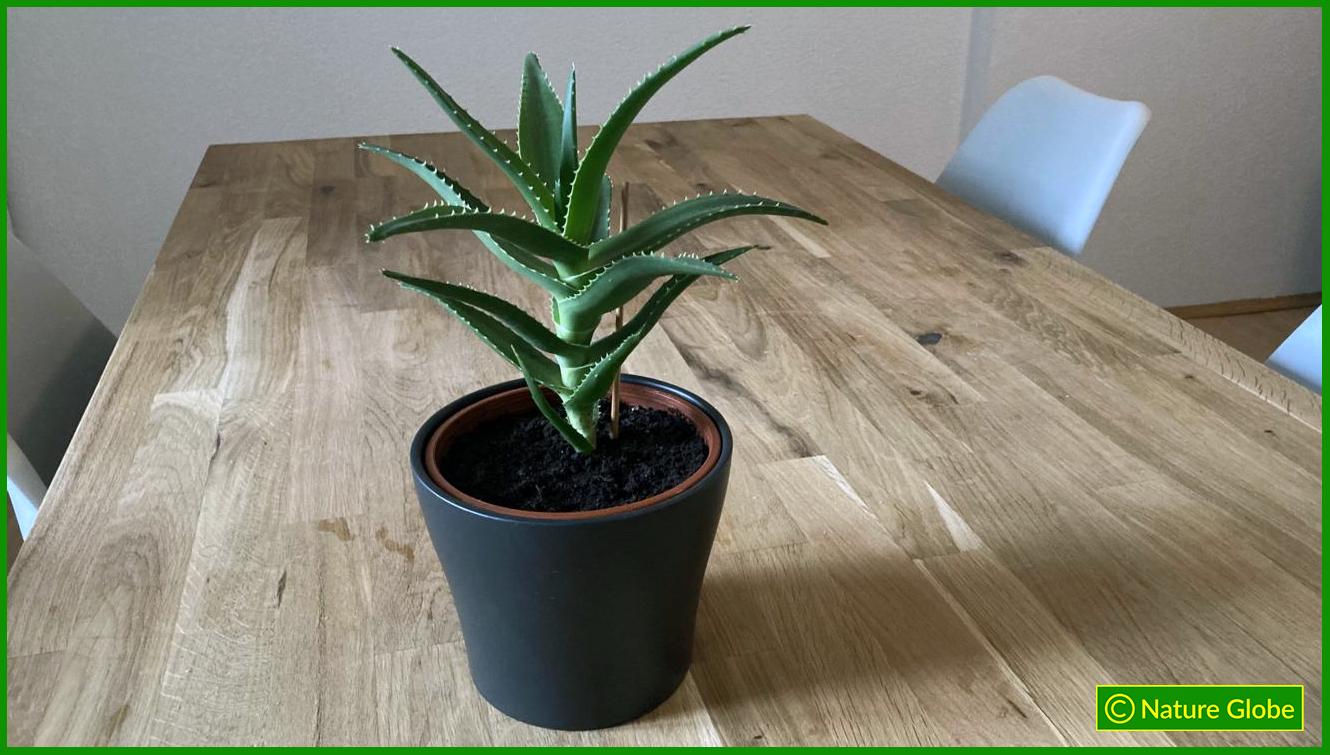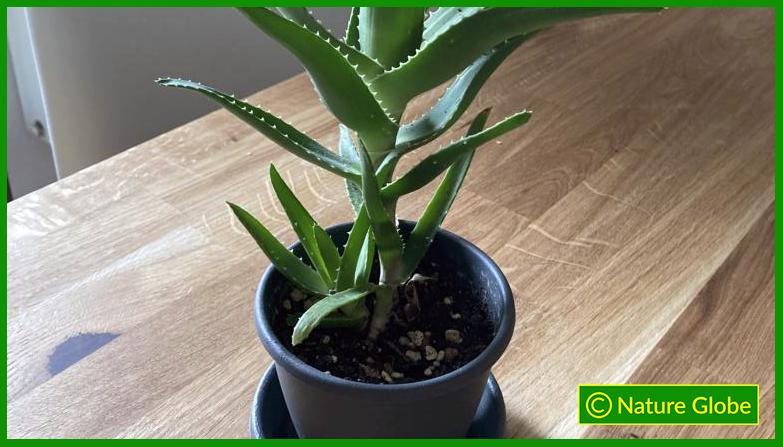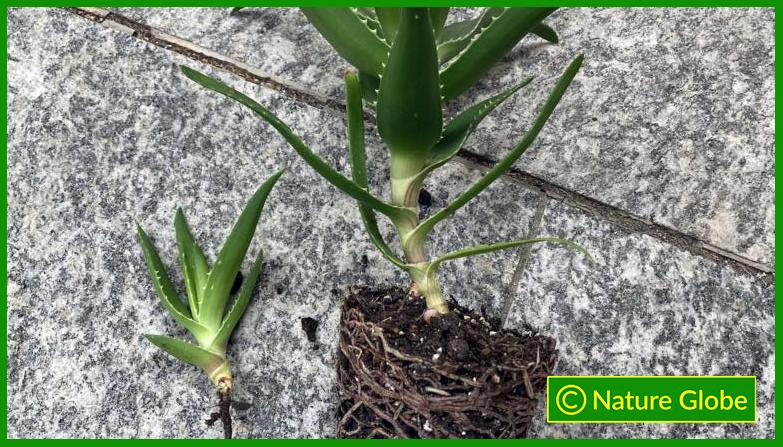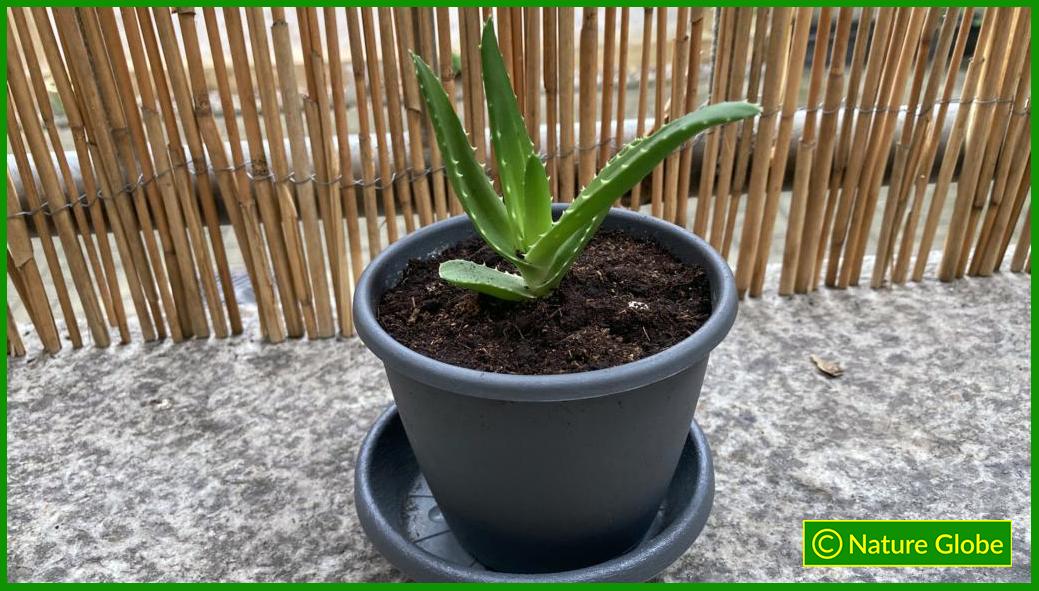The frugal and robust aloe ciliaris is suitable as an easy-care houseplant due to its undemanding properties. This makes them very attractive for beginners and people without a green thumb.
In this guide, we would like to bring you closer to everything about the correct care and cultivation of the aloe ciliaris.
First, the most important things in a nutshell:
Aloe Ciliaris: Origin, Spread & Appearance
The aloe ciliaris, also known as the common climbing aloe, comes from the rocky coastal regions of South Africa (Eastern Cape). In the meantime, however, it is cultivated in all tropical and subtropical regions of the world.
In our latitudes, outdoor cultivation is largely only possible during summer. However, in autumn, a good time before the first frost, it should be brought back inside.
In the apartment, the succulent is particularly happy about a sunny spot on the windowsill or in the conservatory.

Unlike its famous relative, the aloe vera, the climbing aloe grows in a stem-forming and branching manner, with lanceolate, pointed and serrated leaves.
In the wild, under optimal conditions, it can grow up to 5 m tall and bloom magnificently. The aloe ciliaris forms dense, conical racemes with about 20-30 flowers on the inflorescence, which can be up to 30 cm long.
A distinction is made between the following varieties of Aloe ciliaris:
- Aloe ciliaris var. redacta
- Aloe ciliaris var. tidmarshii
- Aloe ciliaris var. ciliaris
Aloe Ciliaris Uses & Benefits
In contrast to the widespread aloe vera, the climbing aloe does not have any healing properties, so it is only suitable as a houseplant in a pot or container.
With minimal maintenance, you can enjoy the decorative succulent for years and grow more plants thanks to a variety of offshoots.
Aloe Ciliaris: Proper Care, Watering & Winter Storage
The care of the undemanding climbing aloe is easy and does not differ from that of other types of aloe and succulents. Only frost and waterlogging can become dangerous and cause lasting damage.
The aloe ciliaris should be as bright as possible in your home. A warm and sunny spot on the windowsill facing south or south-west is ideal.
Better to water too little than too much. The subtropical indoor plant is very used to drought and longer dry spells in its homeland. Waterlogging, on the other hand, can quickly lead to root rot.

The water requirement of the aloe ciliaris is low to moderate. The soil should be well dried before the next watering. Excess irrigation water should be able to drain away through a drainage system.
Depending on the type of hibernation, watering can even be almost completely dispensed with during this time. The colder and darker the climbing aloe winters, the less it needs to be watered, as it stops growing during this time and gathers new strength.
Aloe Ciliaris: Substrate & Repotting
In its natural environment, the climbing aloe grows in loose, sandy soil with a high mineral content.
As a container and houseplant, the aloe ciliaris also thrives in commercially available potting soil, but the substrate should ideally be low in humus and adapted to that of the natural environment.
You can easily do this yourself by mixing the soil with mineral components (sand/expanded clay/perlite). Alternatively, special cactus and succulent soil can also be bought in stores.
It is sufficient if you repot the aloe every 2-4 years. At the same time, you can also remove the offshoots (root shoots) and plant them separately.
The best time to repot is spring, just before the start of the growth phase. Do not water the climbing aloe about 1 week before repotting, so that the old substrate can be more easily detached from the root ball.
Now place the plant in a larger pot with a drainage hole and fill it with the fresh substrate. Now keep the aloe out of direct sunlight for a while and wait a few days before watering for the first time.
If you repot your climbing aloe regularly, you can save on additional fertilizer. If you still want to fertilize, do so only in small doses during the growth phase (spring to autumn).

Tip: Fill the bottom of the pot about 2 cm high with a layer of expanded clay, pebbles or broken pottery shards to create additional drainage.
Aloe Ciliaris Propagation (Shoots & Cuttings)
With good care, the aloe ciliaris quickly forms offshoots. These children appear either via root suckers or directly on the trunk of the mother plant.
Alternatively, it is also possible to propagate the succulent by cuttings. The head of the plant with some leaves is generously cut off. However, this is only recommended for older, tall climbing aloes.
The root suckers are best suited for separate cultivation, as they are easier to separate from the mother plant and have often already developed their own fine roots.
With the cuttings method and stem cuttings, this is a little more complicated as there are no roots yet and a pruning is required.
The offshoots are cared for in a small pot like the mother plant, but should not initially be placed in the blazing midday sun.

Aloe Ciliaris Pests & Diseases
The robust and undemanding Aloe ciliaris, like its conspecifics and other succulents, is rarely attacked by pests.
If there are symptoms of deficiency, this is typically due to care mistakes such as waterlogging or a location that is too dark.
With spider mites or mealybug infestation, it is important to isolate the infested plant and remove the pests. There are some helpful tricks and home remedies for this.
Video: Propagating Aloe Ciliaris with Offshoots
In the following video you can see the steps of offshoot propagation just described again beautifully illustrated and explained.
Aloe Ciliaris: Undemanding Succulent (Summary)
The beginner-friendly aloe ciliaris is an undemanding and easy-to-care-for indoor plant. In a suitable location (bright and warm) you can enjoy the undemanding succulent for many years. Only persistent moisture and frost can seriously damage it.
During the summer, the climbing aloe looks forward to a sunny spot on the balcony or terrace.
If you have any questions or comments about the correct care of the aloe ciliaris, please feel free to contact us. We look forward to all feedback and comments!
This page was created by Micha Gengenbach. Have a look at Micha’s author page to get further information on his background, a list of all his articles, as well as an overview on his other responsibilities on Nature Globe.

